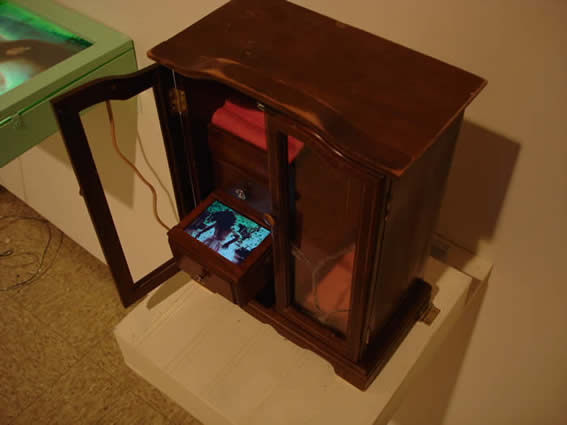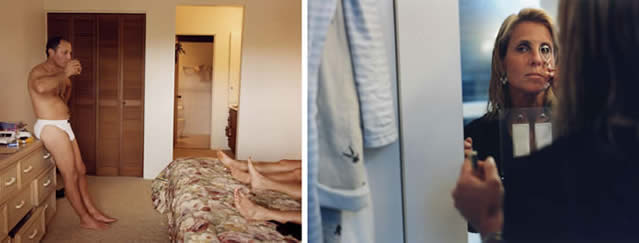Other Selves
Photography and Video Installation
Kimberlee Koym
Amie Potsic
Jennifer Rosenberg
December 12th, 2003 - January 18th, 2004

2111 Mission Street
Suite 401
San Francisco 94110
510.467.4818
info@mission17.org
Other Selves
Photography and Video Installation
Kimberlee Koym
Amie Potsic
Jennifer Rosenberg
December 12th, 2003 - January 18th, 2004

The works in this show call upon the technique of self-portraiture, and the themes of interiority and domesticity to address questions of self-identity in reflective and psychologically probing ways. Through the juxtaposition of family resemblences, living people and inanimate objects, moving figures and the weight of things, these works examine the manner in which identity is mediated by difference. They explore the self as bound up with what otherwise might be taken to be its “other,”and locate the work of art at the juncture between the two.
With Virginia Wolf’s Mrs. Dalloway as the inspiration and text for her installation, Virginia’s Moving Blue House, Kimberlee Koym explores the psychological interiority of ‘stream of consciousness’ through video images of animated and live-action figures engaged in repeated, meditative and, at times, dancerly movement. By installing these videos in a side-board suspended from the ceiling, she brings this movement of thought and action into tension with the psychological significance borne by objects, and the burden of corporeality.
In her Doppelganger series, Amie Potsic juxtaposes images of damaged mannequins with self-portraits taken after a bus accident that left her face similarly wounded. As an investigation of the relationship between self and other, exhibitionist and voyeur, the images evoke feelings of both pain and pleasure. Questioning the nature of experience, serendipity, and fate, Potsic’s photographs highlight the manner in which we suffer with and through the objects that constitute our world.
In her Family Series, Jennifer Rosenberg shares the intimacy of her relationship with her parents, and their relationship with one another. The resemblance between them betrays the role of identification in the construction, not of only the pictures, but furthermore, one surmises, of the artist’s sense of self. Her parents theatricality and obvious contribution to the images – whether self-conscious or not – in turn, raises questions of agency in art and life. Are these moments staged or captured—and does it matter? Who are these images a portrait of—her parents—or the artist herself? Are these pictures that the artist is taking of her parents, or rather pictures that they as a family have engendered?

Kimberlee Koym

Jennifer Rosenburg